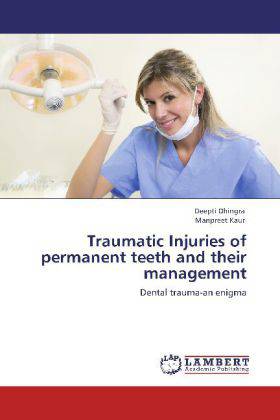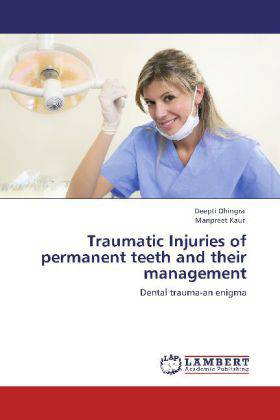
- Afhalen na 1 uur in een winkel met voorraad
- Gratis thuislevering in België vanaf € 30
- Ruim aanbod met 7 miljoen producten
- Afhalen na 1 uur in een winkel met voorraad
- Gratis thuislevering in België vanaf € 30
- Ruim aanbod met 7 miljoen producten
Zoeken
Traumatic Injuries of permanent teeth and their management
Dental trauma-an enigma
Deepti Dhingra, Manpreet Kaur
Paperback | Engels
€ 89,45
+ 178 punten
Omschrijving
Traumatic dental injuries present difficult problems for both patients and their dentists. Current evidence allows the dental health care provider to manage situations that, in the past, often resulted in crippled dentition and unsightly appearance. Appropriate treatment can turn what at first glance looks like a hopeless situation into a very satisfactory outcome for patients. Most dental injuries involve damage to one or two teeth. However, often multiple teeth are injured and injuries are associated with soft tissue and alveolar fractures. In these cases, treatment must be prioritized and preference given to injuries for which time is important in determining long-term prognosis. Dental traumatology has progressed in recent years to improve the understanding of the biological considerations involved in both diagnosis and treatment principles. Through public awareness efforts, people now are more knowledgeable about dental trauma (e.g. knowing to put an avulsed tooth in milk). Research explores new approaches (e.g. laser doppler flowmeter for pulpal evaluation) and materials (e.g. Emdogains). The future has promise for even more successful management of traumatic dental injuries.
Specificaties
Betrokkenen
- Auteur(s):
- Uitgeverij:
Inhoud
- Aantal bladzijden:
- 164
- Taal:
- Engels
Eigenschappen
- Productcode (EAN):
- 9783848499809
- Verschijningsdatum:
- 1/05/2012
- Uitvoering:
- Paperback
- Afmetingen:
- 152 mm x 220 mm
- Gewicht:
- 249 g

Alleen bij Standaard Boekhandel
+ 178 punten op je klantenkaart van Standaard Boekhandel
Beoordelingen
We publiceren alleen reviews die voldoen aan de voorwaarden voor reviews. Bekijk onze voorwaarden voor reviews.








